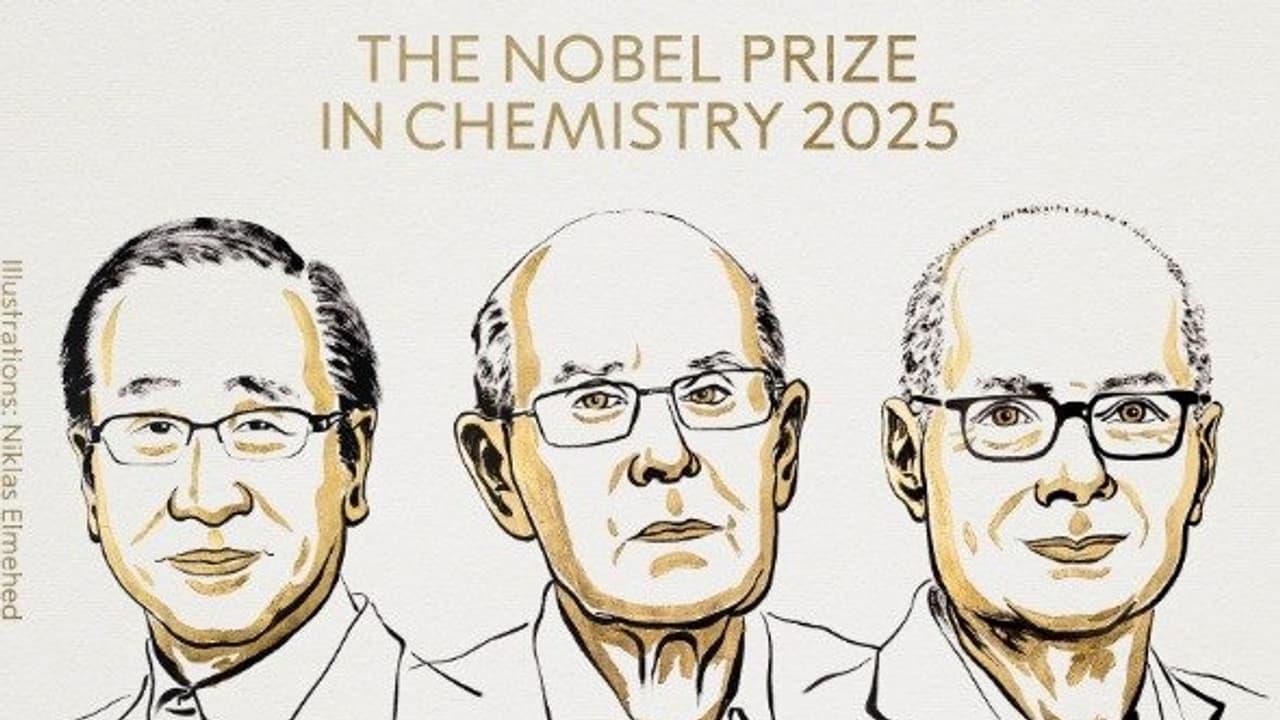
Susumu Kitagawa, Richard Robson And Omar M Yaghi Win Nobel Prize In Chemistry 2025 For MOF Innovation
The 2025 Nobel Prize in Chemistry has been awarded jointly to Susumu Kitagawa (Kyoto University, Japan), Richard Robson (University of Melbourne, Australia), and Omar M. Yaghi (University of California, Berkeley, USA) for their pioneering development of metal-organic frameworks (MOFs), a revolutionary class of porous crystalline materials.
Susumu Kitagawa, Richard Robson and Omar M. Yaghi have been awarded the 2025 #NobelPrize in Chemistry for the development of a new type of molecular architecture 1989, chemistry laureate Richard Robson tested utilising the inherent properties of atoms in a new way. He... twitter/cX6VCmkQID
- The Nobel Prize (@NobelPrize) October 8, 2025
What are metal-organic frameworks (MOFs)?
MOFs are molecular structures made by linking metal ions with organic molecules to form highly porous frameworks. These nanoscopic 'rooms for chemistry' can trap, store, and manipulate gases and molecules, offering enormous potential in sustainability and industrial applications.
Origins and development of MOFs
In 1989, Richard Robson first experimented with assembling metal ions and organic molecules into spacious crystalline frameworks, laying the foundation for MOFs. In the 1990s, Susumu Kitagawa showed these structures could absorb and release gases, demonstrating their flexibility. Omar Yaghi later engineered stable MOFs with tunable properties, introducing rational design principles for practical applications.
Applications and significance
MOFs' high internal surface area allows gases such as carbon dioxide, methane, or water vapor to flow through their cavities. They can capture greenhouse gases, purify water, catalyze chemical reactions, and store hydrogen fuel. These materials are transforming materials science and offering sustainable solutions for energy and environmental challenges.
Expert recognition
Heiner Linke, Chair of the Nobel Committee, stated,“Metal-organic frameworks have enormous potential, bringing previously unforeseen opportunities for custom-made materials with new functions.” Tens of thousands of MOFs have been synthesized since, with applications ranging from carbon capture to desert water harvesting.
Legal Disclaimer:
MENAFN provides the
information “as is” without warranty of any kind. We do not accept
any responsibility or liability for the accuracy, content, images,
videos, licenses, completeness, legality, or reliability of the information
contained in this article. If you have any complaints or copyright
issues related to this article, kindly contact the provider above.
Most popular stories
Market Research

- Pepeto Presale Exceeds $6.93 Million Staking And Exchange Demo Released
- Citadel Launches Suiball, The First Sui-Native Hardware Wallet
- Luminadata Unveils GAAP & SOX-Trained AI Agents Achieving 99.8% Reconciliation Accuracy
- Tradesta Becomes The First Perpetuals Exchange To Launch Equities On Avalanche
- Thinkmarkets Adds Synthetic Indices To Its Product Offering
- Edgen Launches Multi‐Agent Intelligence Upgrade To Unify Crypto And Equity Analysis



















Comments
No comment